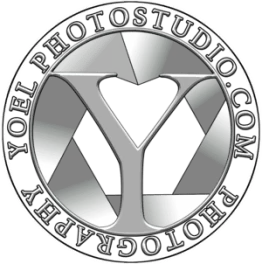As a photographer who’s passionate about capturing the world’s transient beauty, I’ve always understood that snapping the photo is just the beginning. The true magic happens during the editing process. It’s there where visions come to life and images transcend into art. As 2024 rolls in, I’ve delved deep into the realm of photo editing software, evaluating the industry’s leading tools to determine the best options available. Top-tier photography editing tools have evolved, ensuring that whether you’re a budding enthusiast or a seasoned professional, the perfect image editing software is within reach.
With a plethora of choices at hand, I’ve found that professional photo editing software like Adobe Photoshop continues to set the bar, offering meticulous control for complex projects. But it’s important to acknowledge the innovation from Skylum’s Luminar Neo, whose AI-driven effects are creating ripples in social media entertainment. Companies are integrating more AI and cloud compatibility, drastically altering how photographers like us approach our digital workflow. Every piece of editing software offers unique capabilities to cater to varied photographic demands, all while fostering creative expression.
Whether you prefer a non-subscription model like Photoshop Elements 2024 with its advanced AI enhancements or the power and flexibility Adobe’s suite grants, it’s clear that the landscape of photography editing tools in 2024 is designed to empower creators. It’s an exciting era for digital photography, and the incredible selection of editing software for photographers makes this craft even more exhilarating.
Key Takeaways
- AI integrations in photo editing software enhance creative possibilities for photographers.
- Professional photo editing software provides extensive control for precise image manipulation.
- Cloud compatibility in tools like Adobe Lightroom introduces groundbreaking workflow efficacy.
- Non-subscription software options appeal to those seeking a cost-effective, one-time investment.
- 2024 sees a dynamic range of photo editing options, ensuring tools for every skill level and artistic ambition.
Essential Features in Professional Photo Editing Software
As a photographer who appreciates the finer details of digital imagery, I recognize that certain features are indispensable in professional photo editing software. My experience with various platforms has led me to conclude that the capabilities which truly differentiate the best editing software for photographers revolve around advanced RAW processing, non-destructive editing environments, and the ability to make layer-based adjustments.

Advanced RAW Processing Capabilities
To unlock the complete creative potential latent in every photograph, advanced RAW processing is crucial. This feature ensures that all the data from the camera’s sensor is utilized resulting in superior quality images that can be adjusted extensively in post-production. Software that incorporates strong RAW processing engines like ON1 Photo RAW 2024 exemplifies the power to coax the finest details from a photographer’s capture, guaranteeing that the final image is faithful to the original scene.
Non-Destructive Editing Environment
A non-destructive editing environment is a sanctuary for original files. It allows me to explore creative avenues without the fear of overriding the authenticity of my captures. Such an environment also affords a flexible workflow, enabling me to experiment and refine edits over time, which is a testament to the adaptability that professional photo editing software should offer.
Layer-Based Adjustments for Maximum Control
The pinnacle of precision in photo editing is achieved through layer-based adjustments. These adjustments provide discrete control over every aspect of an image, permitting nuanced manipulation that can elevate a photograph from ordinary to extraordinary. ON1 Photo RAW 2024 is an archetype of such software, blending intuitive layer functionality with the power of raw processing for results that cater to even the most discerning of professional standards.
| Feature | Importance | Impact on Workflow |
|---|---|---|
| Advanced RAW Processing | Essential for maximum image quality | Enables a broad range of post-production adjustments |
| Non-Destructive Editing Environment | Crucial for preserving original files | Allows for reversible edits and creative experimentation |
| Layer-Based Adjustments | Key for detailed image control | Offers precise manipulation for sophisticated outputs |
Top Photo Editing Software for Different Photography Styles
As someone who’s navigated the changing waters of digital photography, I’ve witnessed firsthand the transformative power of photo retouching software and photo manipulation software in bringing artistic visions to life. Different styles of photography benefit from particular features in software, and my deep dive into the world of photography editing tools has revealed distinct advantages tailored to every creative need. Let us explore the top photo editing software designed to cater to various photography styles.
For the fleet-footed mobile photographer, the convenience of Adobe Lightroom’s cloud storage and the agility of its cross-device editing are unmatched. Its streamlined interface enables quick adjustments to be made on-the-fly, epitomizing the mobile photography creed of capturing and editing anywhere.
In the realm of social media, where influencers thrive on eye-catching visuals, Skylum Luminar Neo emerges as a champion. Its user-friendly interface, combined with powerful AI enhancements, offers influencers the tools to create game-changing images with minimal effort.
Adobe Photoshop stands as a sanctuary for professionals seeking the pinnacle of photo manipulation software. With its advanced features geared toward immaculate detail control and comprehensive design, Photoshop remains the industry benchmark for professional photography editing.
I’ve also been impressed by PhotoDirector 365 for photographers who are conscious of their budgets but unwilling to compromise on functionality. Its feature set competes admirably with top-tier programs, and in many ways, it mirrors the capabilities of Corel PaintShop Pro, a notable alternative to Adobe’s subscription-based giant.
To illustrate the unique offerings of these software platforms, let’s draw a comparison:
| Software | Key Feature | User Base | Cost Effectiveness |
|---|---|---|---|
| Adobe Lightroom | Cloud Storage & Cross-Device Editing | Mobile Photographers | Subscription-Based |
| Skylum Luminar Neo | AI Enhancements for Quick Editing | Influencers | One-Time Purchase |
| Adobe Photoshop | Advanced Detail Manipulation | Professional Photographers | Subscription-Based |
| PhotoDirector 365 | Balance of Power and Price | Budget-Conscious Creatives | Annual Subscription |
| Corel PaintShop Pro | Photoshop-like Tools without Subscription | Professionals & Hobbyists | One-Time Purchase |
In conclusion, whether it’s capturing the perfect cityscape on your phone or crafting a surreal masterpiece from a studio shoot, the right photo editing software can enhance not only the visuals but also the very process of creation. Each software I’ve interacted with has excelled in different domains, aligning with the diverse spectrum of photographic expression.

Enhancing Your Workflow with Editing Software for Photographers
As a dedicated photographer, I’ve personally felt the pressure to manage large sets of images efficiently. The need for an efficient editing workflow has never been more crucial as we juggle increased photo demands and tighter deadlines. With cutting-edge photo editing software at our disposal, the game has changed. Tools like Adobe Lightroom and ON1 Photo RAW have revolutionized our ability to process photos with both speed and precision.
Batch Processing for Efficient Editing
I’ve relied heavily on the batch processing features in my photo editing software to maintain a consistent look and feel across my portfolios. This isn’t just a timesaver, it’s a lifeline when needing to deliver results fast without sacrificing quality. Efficient editing tools embedded in these programs let me apply edits to a group of photos with a single click, which is vital when deadlines are tight and clients are waiting.
Custom Presets and Profiles
Moreover, custom presets have elevated my workflow by ensuring a cohesive aesthetic across varying shoots and conditions. These custom profiles act like a personal editing blueprint, saving me invaluable time. Whether it’s a specific color look or an intricate adjustment layer setup, having these presets at my fingertips means delivering top-tier images with consistency and ease.
The Benefits of Cloud Storage and Mobile Editing
The advent of cloud storage and mobile editing capabilities has undeniably been a game-changer for me. The portability of my photo library and the ability to edit on-the-go with devices like tablets and smartphones offer a level of freedom that was unheard of just a few years ago. Travelling no longer means being disconnected from my work, thanks to services like Adobe’s Lightroom CC that store my images securely in the cloud and make them accessible from anywhere.
In conclusion, embracing these advanced tools and features has significantly influenced my ability to deliver high-quality imagery at a pace that meets the modern demands of clients and the creative industry.
Editing Software Reviews: Experts Weigh In
The debate on the best editing software for photographers seems to be an ever-evolving discussion among professionals and hobbyists alike. In my pursuit to offer a credible perspective, I’ve collated insights from experts who’ve embraced the nuances of varied image editing software. Reflecting on these editing software reviews, one can’t help but recognize the dominance of Adobe’s suite – particularly Photoshop and Lightroom Classic – famed for their comprehensive toolsets and precision. Yet, there’s an undeniable rise of alternatives challenging this status.

Affinity Photo and Skylum Luminar Neo, for instance, have carved their niches by shirking the subscription model, thus gaining favor among those who prefer a one-time expense. CyberLink PhotoDirector deserves a nod for its evolutionary updates, keeping pace with the industry’s demands. But what remains clear from these observations is that selection is highly personal; balancing complexity, user-friendliness, and affordability is key. Below you’ll find a detailed comparison to guide your choice.
| Software | Subscription | One-Time Purchase | User-Friendly | Advanced Features |
|---|---|---|---|---|
| Adobe Photoshop | ✓ | ✓ | ||
| Adobe Lightroom Classic | ✓ | ✓ | ✓ | |
| Affinity Photo | ✓ | ✓ | ||
| Skylum Luminar Neo | ✓ | ✓ | ||
| CyberLink PhotoDirector | ✓ | ✓ | ✓ |
In conclusion, whether you’re an established professional or an aspiring photographer, your perfect match in terms of editing software depends not just on the expert reviews but on how well the tool aligns with your workflow and creative aspirations. It’s worth spending time to explore and test these options, so the software you choose ultimately enhances your photographic expression.
Comparing Subscription Models vs. One-Time Purchase Software
As a photographer, the decision to invest in editing software comes with significant consideration of its impact on my work and wallet. The crux of this decision often lies between the latest subscription models and traditional one-time purchase licenses. Having a deep understanding of these offerings is essential for all of us who rely on these tools to bring our creative visions to life.
In the current market, software companies tend to offer two main pricing strategies: subscription-based models with monthly and yearly payments, and one-time purchases conferring a lifetime license. Here, I will dive into the advantages and disadvantages of each, assessing their value based on long-term financial and functional standpoints.
Monthly and Yearly Subscriptions: Pros and Cons
With services like Adobe Creative Cloud, the subscription model is prevalent, providing photographers with monthly and yearly payment plans. This model ensures continuous access to the latest updates, features, and often, cloud storage—tools which are invaluable for keeping up with the evolving demands of digital photography. Yet, this comes with an ongoing financial commitment.
- The primary benefit is the ability to stay current with software advancements without additional costs.
- Conversely, the accumulated expense over time can far exceed the initial cost of a one-time purchase, impacting long-term budgeting.
Lifetime Licenses: Cost-Effectiveness Over Time
On the flip side, programs like Affinity Photo offer lifetime licenses, a one-time purchase that appeals for its financial predictability and the ownership it grants. This could potentially provide more cost-effectiveness over time, without the worry of future expenses.
- The obvious advantage is the avoidance of recurring fees, leading to potentially significant savings as the years progress.
- However, the downside may include missing out on new updates or features without additional upgrade costs, potentially leading to outdated software.
In carefully evaluating both options, I consider the immediate and projected needs of my photography business, alongside the trajectory of software development. The right choice hinges on both my professional demands and my budgeting strategy—each of us must weigh the available options against our unique practices.

Conclusion
In the realm of photo editing software, 2024 stands out as a year in which technology has not just caught up with the imagination of photographers, but has begun to anticipate our needs. For someone like me, with years behind the lens, the advancements in editing software for photographers paint an inspiring picture of what’s now possible. We have at our fingertips tools that are adept at marrying precision with ease of use—a convergence of features that truly democratize the art of digital photography.
The best editing software for photographers has evolved to become more intuitive, making powerful editing accessible to newcomers and providing depth for experts. Its canvas stretches across skill levels and budgets, addressing the diverse requirements of this creative domain. As we traverse this digital era, the seamless integration of AI, alongside traditional controls, ensures that every photographer can elevate their work uniquely, effectively tailoring the look, feel, and story they wish to convey through their visuals.
The tools of our trade profoundly influence how we engage with photography. From AI-enhanced simplicity for rapid content creation to robust tools that finesse the minute details of a composition, this year’s offerings are versatile and potent. It’s a thrilling time to be a photographer—as the innovations in photo editing software advance, they offer us not just incremental improvements but leaps that transform how we capture and share our view of the world. For me, each new release isn’t just an update; it’s an invitation to reimagine the boundaries of my creativity.
FAQ
What should I look for in professional photo editing software?
When choosing professional photo editing software, prioritize advanced RAW processing capabilities, a non-destructive editing environment, and layer-based adjustments for precise control.
Which photo editing software offers the best tools for specific photography styles?
Each photography style may benefit from different tools. For example, Adobe Photoshop is excellent for detailed manipulations, while Skylum Luminar Neo offers powerful AI-driven effects. Lightroom Classic is ideal for organizing and editing workflows, and ON1 Photo RAW is great for dynamic effects and composites.
How can editing software improve my photography workflow?
Look for features like batch processing, custom presets, and profiles. Cloud storage and mobile editing options can significantly enhance your workflow by allowing for flexible and efficient editing, regardless of location.
What are the pros and cons of subscription-based photo editing software?
Subscription models, like Adobe Creative Cloud, provide continuous updates and cloud storage. However, they involve ongoing costs. They’re beneficial if you need the latest features and integrated storage solutions.
Are there quality photo editing options without a subscription?
Yes, several high-quality photo editing software options are available without a subscription. Photoshop Elements and Affinity Photo both offer a one-time purchase model, which can be more cost-effective over time.
Is cloud storage crucial for photo editing software?
While not crucial for everyone, cloud storage offers valuable benefits, such as access to your photos and edits from any device, secure backup, and the ability to easily share images with clients or collaborators.
Do professional reviewers recommend any particular photo editing software?
Professional reviewers often recommend Adobe Photoshop and Lightroom Classic for their extensive features and capabilities. However, alternatives like Affinity Photo and Skylum Luminar have received praise for their robust editing tools without the necessity of a subscription.
How do lifetime licenses compare to monthly or yearly subscriptions financially?
Lifetime licenses usually have a higher initial cost but can become more cost-effective over time as there are no additional fees. Subscriptions spread the cost over time but can end up being more expensive in the long run.
What’s expected in the best photo editing software of 2024?
The best photo editing software of 2024 is expected to offer user-friendly interfaces, advanced editing features, flexible subscription models, and AI-powered tools that cater to both novices and professionals.
How important is AI technology in modern photo editing software?
AI technology is becoming increasingly important in modern photo editing software, providing users with smart features that simplify complex tasks like selections, masking, and applying effects, which can significantly enhance the editing process.


